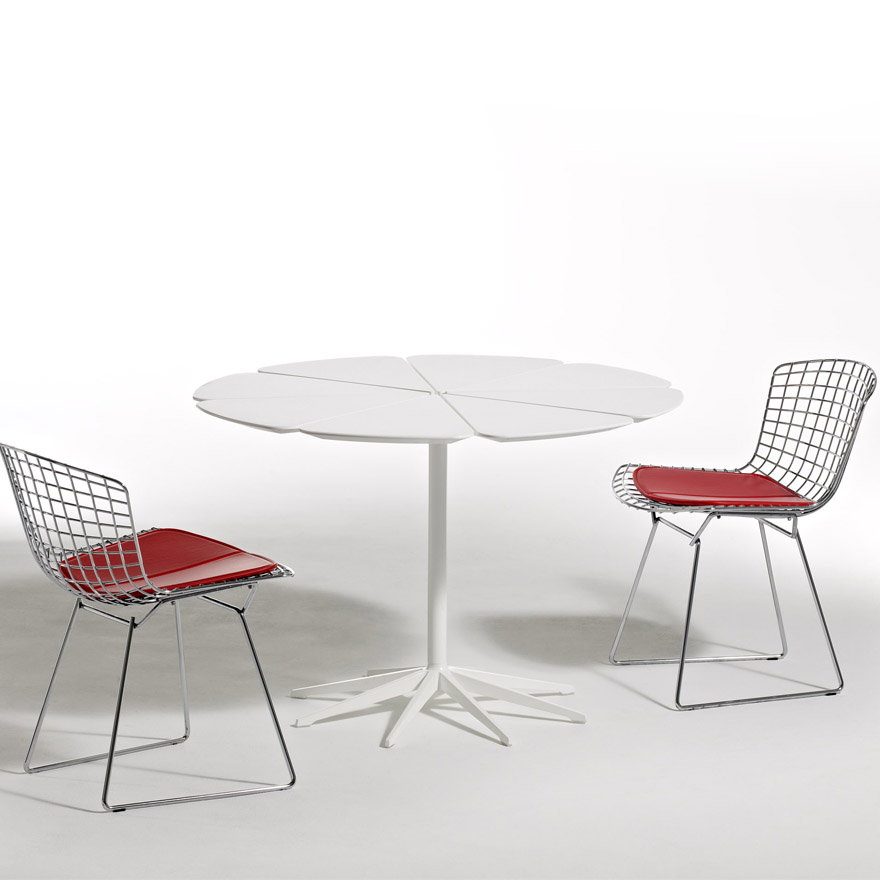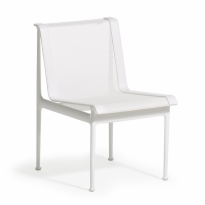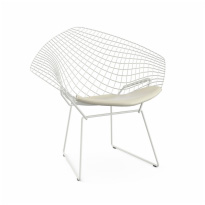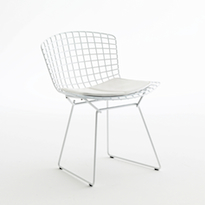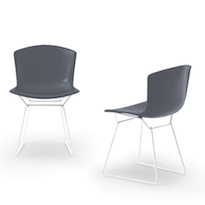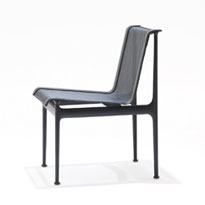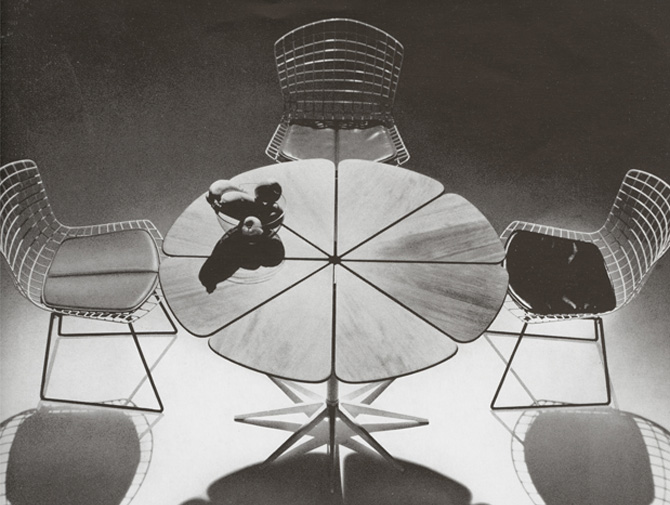Richard Schultz:
“I designed the Petal Table to accompany the Bertoia Chairs. The tops on the tables are made of eight petals, which are mounted on a beautifully crafted cast aluminum spider.
"I was inspired by Queen Anne’s lace, a weed that grows near our house in Pennsylvania. Each cluster of flowers is supported on its own stem. By making a table in this manner there is no need for a ring support, and each petal is independent, which allows the table to expand and contract with the weather.
"The tables were introduced by Knoll in Los Angeles in 1960 and were immediately made part of the MoMA design collection.”

